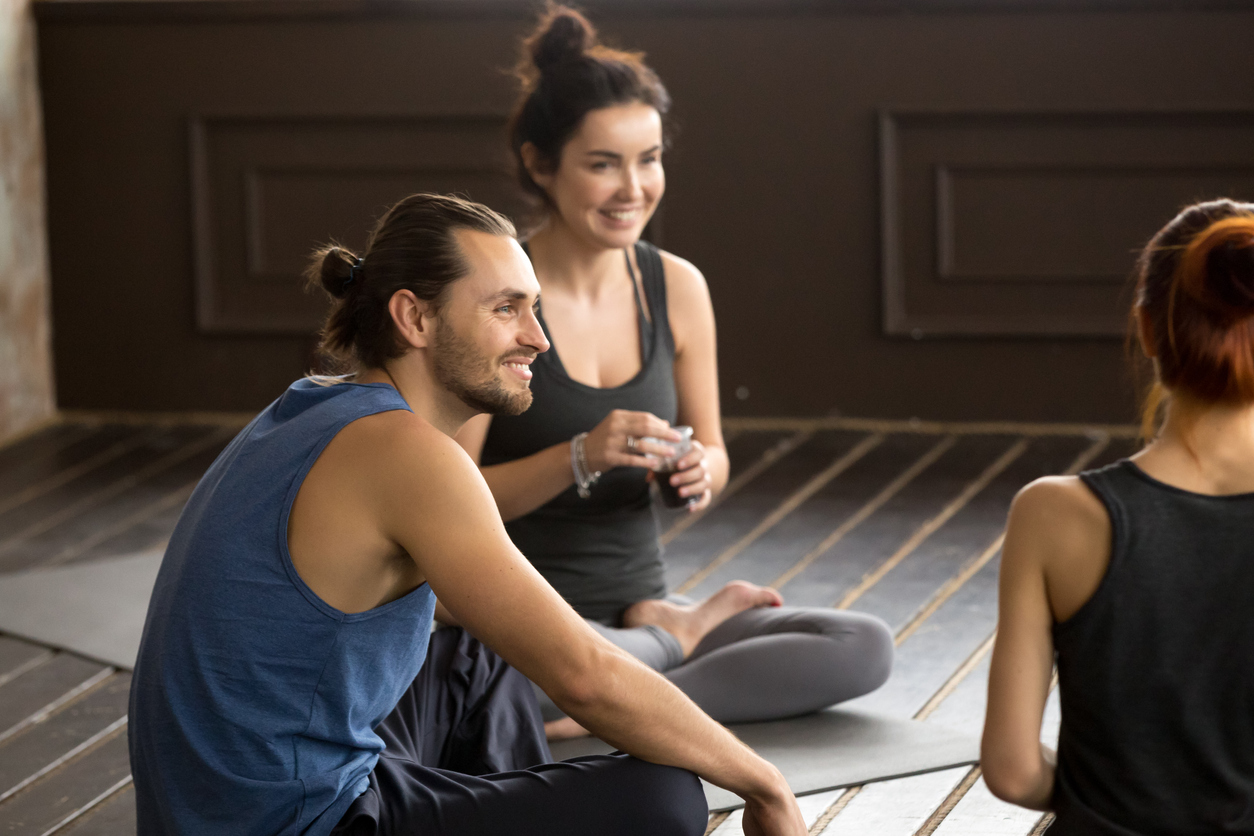Ann-See Yeoh finds the right balance between keeping participants safe and providing a practical and enjoyable experience in mixed-level classes.
Group fitness classes are a fascinating phenomenon and have been a significant part of my life for over 30 years. Participating in group fitness classes can be uplifting, inspiring and life changing. However, they can equally be frustrating, downright dangerous, a waste of time and everything in between. For the group fitness instructor, they can fill you with a buzz that you can rarely replace, or they can be soul destroying.
Mixed-level classes are the norm rather than the exception. Yet, as instructors, we know there can be significant differences between individual learners in every class. We have the brand-new participant, the hardcore fitness addict, those who are there to escape their home life, and those who are there purely for the social aspect. On top of that, it is worth noting that the EMD UK National Survey1 revealed that 21% of group fitness participants report that their day-to-day life is limited, either a little or a lot, by a disability. With 4.86 million people participating weekly in classes, we should consider how accessible our classes are and how we can be more inclusive. Therefore, teaching should be approached as an art rather than a science, as we find the right balance of keeping our participants safe while providing them with a practical and enjoyable experience.
So, where do we start?
- Make the mindset shift that the people in front of you are more than just participants; they are learners and there to improve some aspect of their life. This shift in mindset is subtle but, when you get it, it will have a big difference in how you teach, especially when delivering a class for a facility where there is a tendency for members to pop along to a class because the time suits them.
- Recognise that keen observation is crucial and begin to develop your ability to see your students truly. Everyone wants attention from the instructor, and most want assistance and corrections because they want to understand what they are doing and feel like they are progressing. So, refine your power to observe, as it is a way not only to engage your students but also to evaluate and protect them during a class that may be challenging.
- Realise that the idea of ‘levels’ is simply a construct that actual teaching quickly transcends. If they are constantly choosing what you call the ‘easy or easier’ option or even level one, they will not feel they worked very hard or did their best. However, on the flip side, some students may feel like they always must choose the ‘hardest’ option, even if that is not the best option for their body, which could lead to injury.
You will notice that all the above are shifts in our mindset and approach. Too often over the years, I have seen instructors deliver class after class where the focus is internal for the instructor, perhaps because they want to nail the choreography or get through the class. At some point, that one additional class a week is the tipping point between doing what you are passionate about and it becoming mundane and feeling like a job. It is also easy to fall into the thrill of teaching larger classes and the trap of leading a group of people rather than a room of individuals. We forget that one smile and acknowledgement as we look into someone’s eyes and see them may be the only smile and acknowledgement they have had all week.
To help you further, here are some other tips to consider:
- When planning your class or learning a pre-choreographed class, learn how to truly deconstruct any exercise so that you can cater for 80% of the people in the class, making the choreography more accessible and more intense or intricate for the remaining 20%.
- Experiment with demo strategies. Teach the base option, then offer a regression to those who need it so they feel successful and then provide the progression for those who are more able, who you will find are probably already doing it. When progressing a move or sequence, start with the simplest element to change and avoid switching multiple aspects at once, unless a combination is relatively simple and natural to pick up.
- Qualify when and why to progress and regress an exercise, so your students can make an informed decision and choose the variation that suits them best. When we flip the script and offer progressions for each exercise rather than modifications, we put everyone on an even playing field, grant them the licence to do what is best for them, and set them up with multiple chances for success.
- People are intrinsically or extrinsically motivated; some like to be challenged, while others want to be encouraged. The thing to note is that we teach and motivate how we like to be guided and inspired. So, if we like to be pushed in class, we may subconsciously teach in a way that encourages hierarchy in our classes, where some participants feel that the ability to do a more physically challenging exercise equates to being more advanced.
- Offer the option to take breaks when necessary. What is essential, especially for those who are new to exercise, is consistency. People who exercise in a group are far more likely to stick to exercise than those who go it alone. So, the gradual introduction and build-up will prevent them from feeling sore from overworking unfit muscles and giving up, which sets someone up to enjoy their path into exercise.
Ultimately, we want our students to feel empowered to take control of their experience. Choosing the variation that works best for them at any given moment and feeling comfortable doing so is the first step towards this. Next, it is about working out together as a group, creating an integrated experience where everyone in the class participates equally, regardless of the form of their body. Finally, cultivate a sense of equity and acceptance, irrespective of ability level.
This article previously featured in the Fitpro digital magazine.
Did you know FitPro provide insurance for yoga professionals? Head here now to find out more ✔️
Author Bio
 Ann-See Yeoh is a mind-body fitness specialist with over 30 years’ experience in the fitness industry. She has her feet firmly in yoga, her heart in group fitness and her hands in business. She is a multi-passionate business owner. She is co-owner of Yoga Chew Valley, a bijoux yoga studio in the south-west of England, as well as being a business and lifestyle coach for mind-body fitness professionals. Her global reach is further extended as a proud network marketer, and the delivery of her MY KIND OF YOGA™ teacher training, Les Mills BODYBALANCE® and Advanced training courses, and retreats around the world.
Ann-See Yeoh is a mind-body fitness specialist with over 30 years’ experience in the fitness industry. She has her feet firmly in yoga, her heart in group fitness and her hands in business. She is a multi-passionate business owner. She is co-owner of Yoga Chew Valley, a bijoux yoga studio in the south-west of England, as well as being a business and lifestyle coach for mind-body fitness professionals. Her global reach is further extended as a proud network marketer, and the delivery of her MY KIND OF YOGA™ teacher training, Les Mills BODYBALANCE® and Advanced training courses, and retreats around the world.
Are you an instructor leading group exercise sessions?
Find out more about our group exercise instructor insurance.







